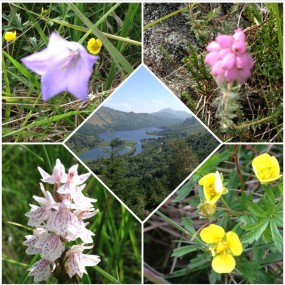“The world is so empty if one thinks only of mountains, rivers and cities; but to know someone who thinks and feels with us, and who, though distant, is close to us in spirit, this makes the earth for us an inhabited garden” (Goethe).
I stepped into the world of social media a couple of years ago when I was a legal practice tutor at the University of Strathclyde. I didn’t want to get left behind in the social media revolution that was happening all around me. I felt I had missed the Facebook boat, but all was not lost as I found Twitter.
As a legal practice tutor I was interested in building a Professional Learning Network (a community of practitioners sharing knowledge and experience) that would benefit legal practice students. Twitter seemed ideal. I followed every lawyer and law firm in Scotland that had a Twitter account, and I added them to a Twitter list. I encouraged students to follow and listen to the people and accounts on the list, and to soak up the learning experience.
Twitter enabled students to keep up to date with the issues lawyers were discussing through tweets, blogs, articles and online legal newsletters. It also enabled students to listen to and exchange tweets with advocates/barristers, solicitors and other legal professionals across the UK and beyond. A great many lawyers were also interested in the future of the legal profession and listening to the views of legal practice students at the cusp of their careers. Practitioners and students followed each other on Twitter, and I do believe they learned from each other. I likened it to a classroom without walls. Learning and sparks of interest could happen 24/7 with far more legal practitioners than any University could possibly afford to employ.
With this positive experience of the power of Twitter in mind I wasted no time in setting up a Twitter account related to my new gardening business, and I entered the Twitter garden community.
Very early on I realised the horticulture profession is made up of a diverse range of people. I followed other gardening businesses, landscapers, suppliers, nurseries, not-for-profit organisations, open gardens, photographers, writers, designers, botanists, historians, garden celebrities, students, allotmenteers and all sorts of people with an interest in gardens, gardening, plants and flowers. They are a diverse group, but they also share a commonality – gardens; and I love gardens.
I believe social media can help bring people together who are new to horticulture, and those with a lifetime of experience within it. For sure there are a wide range of garden people, with a wide range of garden experience, on Twitter. From the hobbyist to the guru, and from the student to the tutor. However, being here is not enough. I don’t believe you can engage the future (or present) of horticulture by expecting them to blindly follow you, while you ignore them. I also don’t believe you can learn without listening. That’s not how you create a Twitter garden community or a classroom without walls.
Thankfully, I’m delighted to say, there are very many garden people who share my Twitter philosophy. These are the people who can ignite passion and interest in gardens, gardening, and horticulture, whether it be an aspiring young horticulturist, or the everyday person with an everyday garden. They are accepting of like minded people. They are not elitist. They recognise everyone has their story to tell. No one is more or less important than the other. I learn from them. They are my Professional Learning Network. This is a Twitter garden community – a classroom without walls, and I like it here.


Well said. Pretty much why I love the Twitter gardening community.